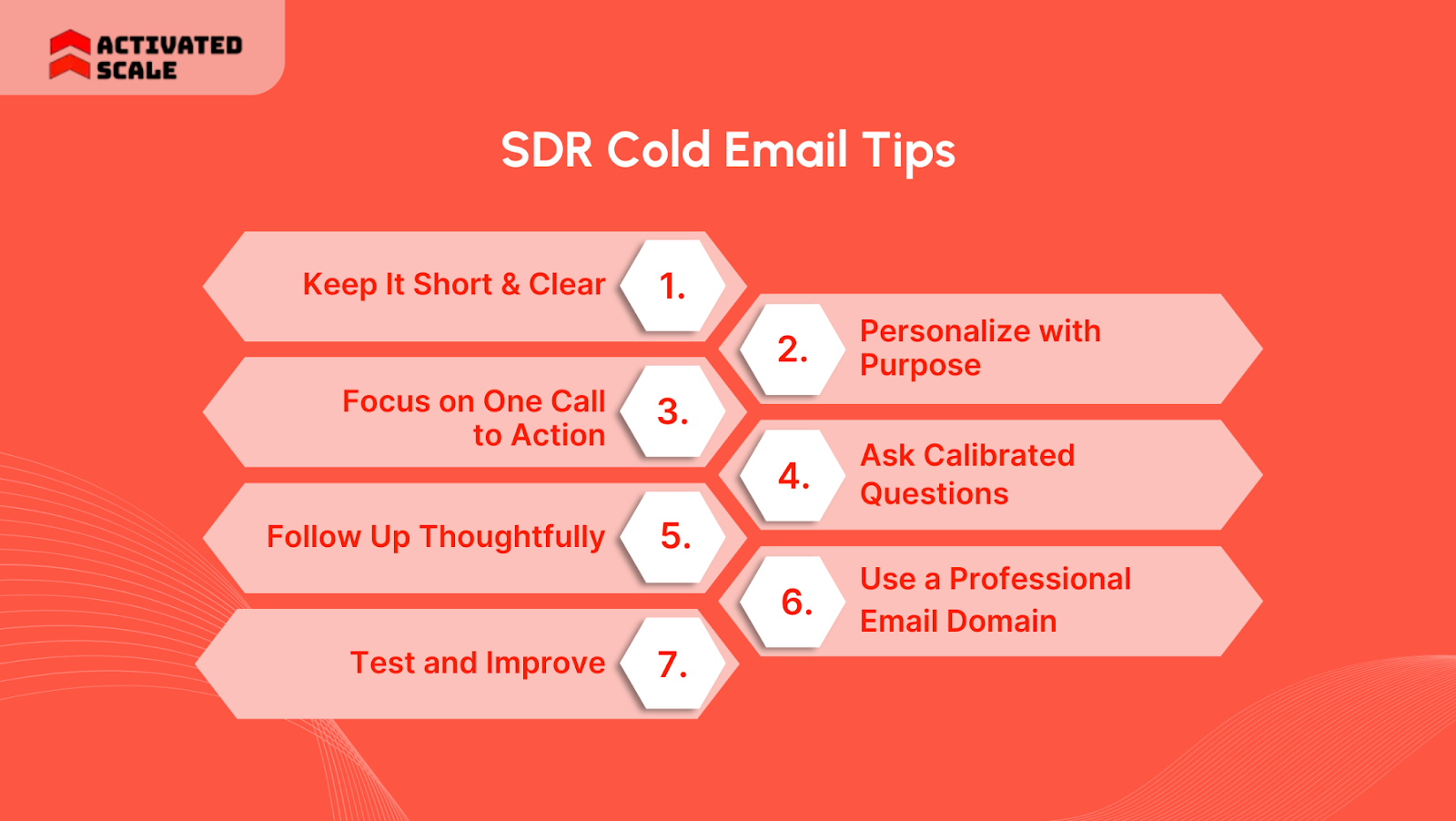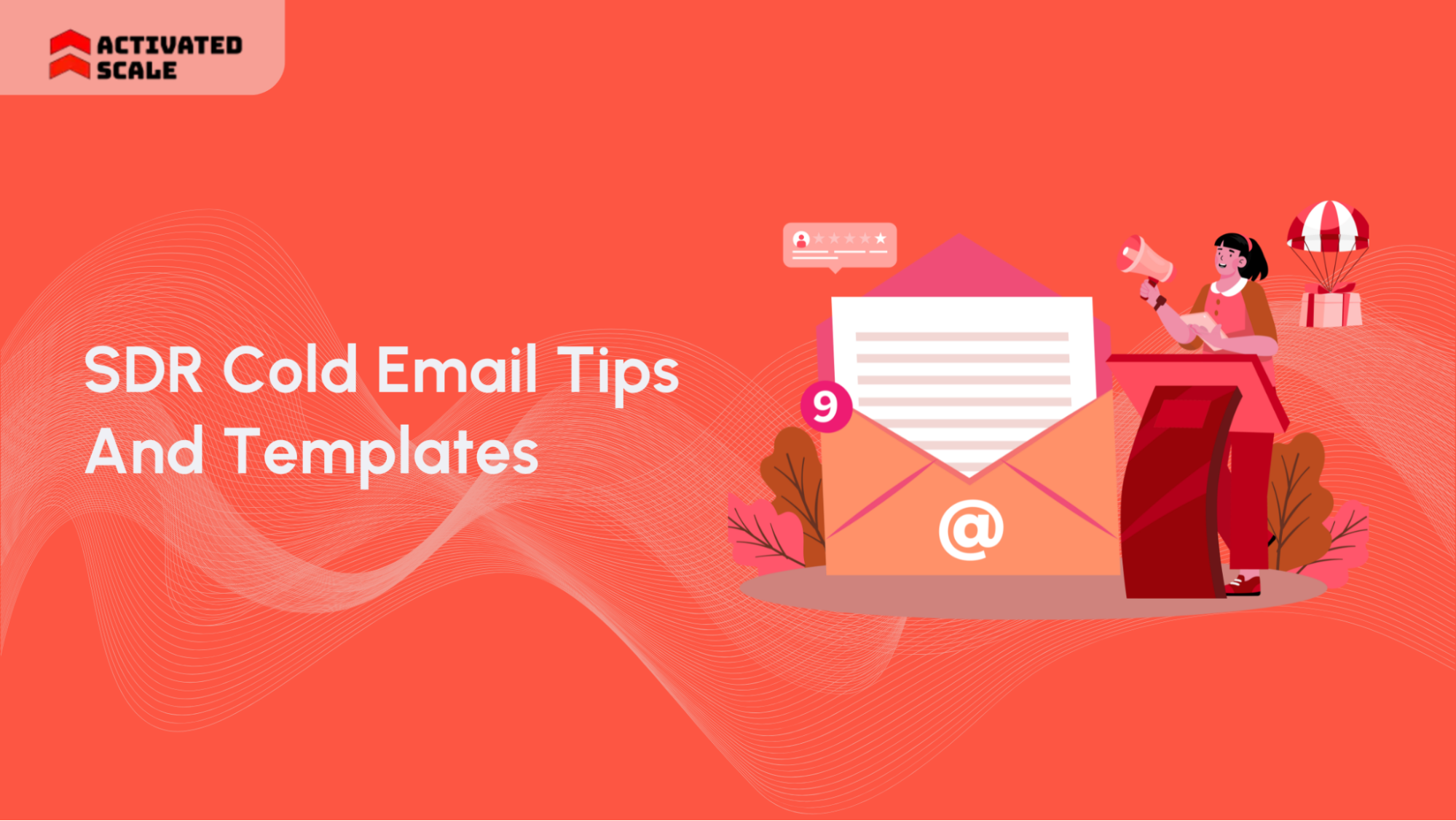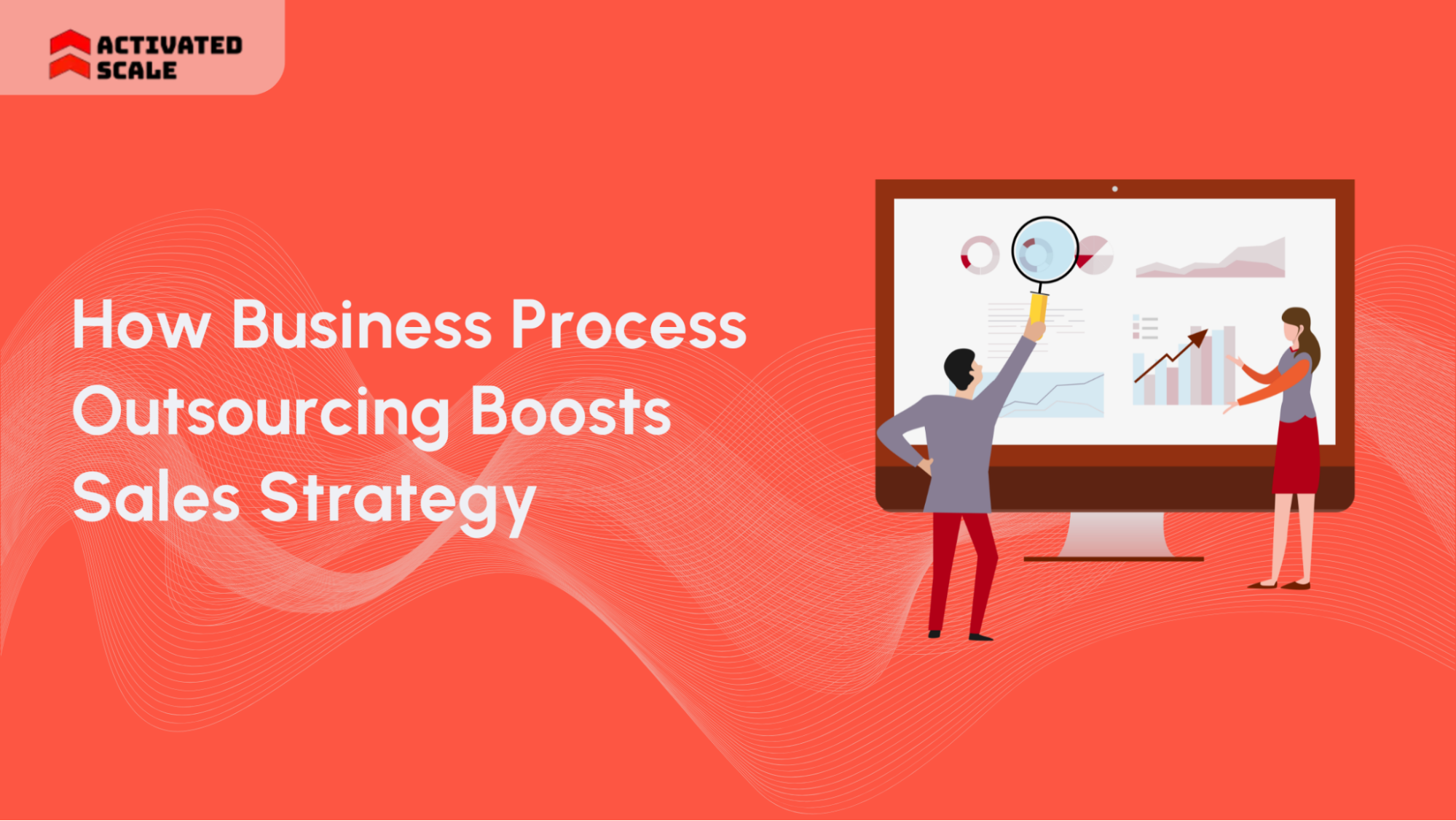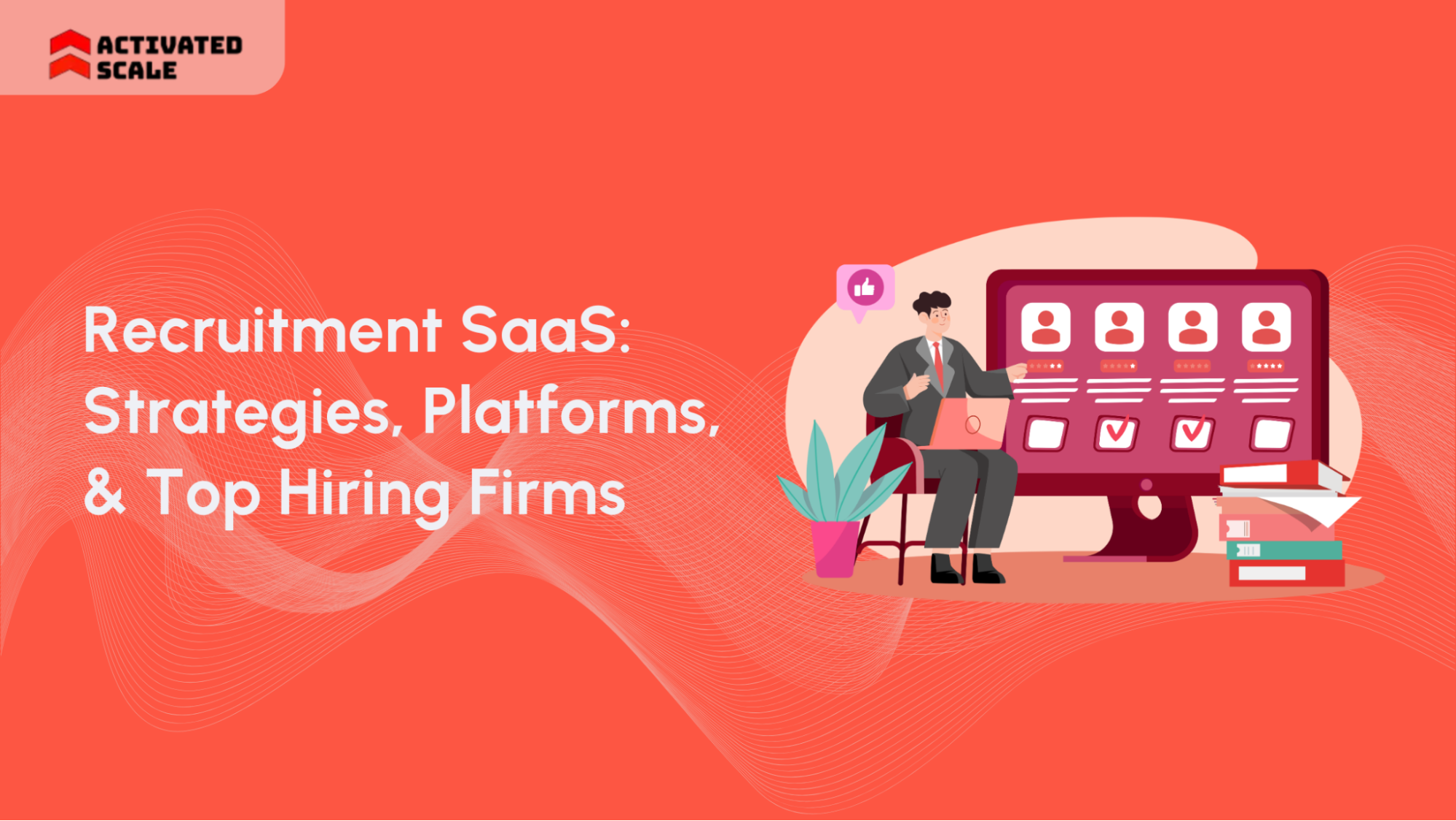Reaching out to prospects by email is still one of the most straightforward ways to have meaningful conversations, but the approach for email SDR outreach has changed over time. Today, buyers get flooded with pitches and ignore anything that sounds scripted or generic. Standing out means thinking beyond formats and focusing on what actually grabs busy decision-makers.
This is more urgent now because SaaS and tech startups feel real pressure to build a pipeline, fill calendars, and prove ROI in less time. With new rules from email providers and smarter filters, every SDR must adapt quickly or risk hitting a wall with their cold outreach. In this guide, we’ll how to turn SDR cold emails into conversations and revenue with some templates and tips.
Overview:
- Email remains one of the most direct and effective ways for SDRs to start sales conversations.
- Approaches to SDR cold emailing must evolve as buyers receive more pitches and ignore scripted messages.
- Personalization and relevance are key to standing out and catching the attention of busy decision-makers.
- Timely emails help SaaS and tech startups build pipelines faster and prove ROI sooner.
- Using clear, concise messaging alongside tested templates improves response rates significantly.
Why Is SDR Email Important?
SDR email outreach matters because it reaches buyers where they are most likely to respond, directly in their inbox. A well-timed outreach can put a brand in front of decision-makers faster than calls or social messages.
Companies find email essential for starting sales conversations since nearly every professional checks email daily, sometimes dozens of times each day. It’s also one of the few ways for SDRs to share context, show credibility, and invite a quick reply in just a few lines.
For tech startups and SaaS teams trying to scale quickly, SDR emails open doors to meetings without the delay or cost of more traditional channels. Despite crowded inboxes, a clear, personal message sent at the right time can not only start a conversation but also help build a predictable sales pipeline.
Looking to book more demos without the cost of a full-time hire? Activated Scale’s Fractional SDRs specialize in prospecting, emailing, and cold calling to fill your pipeline quickly and flexibly. Hire SDRs here.
Also read: How Outsourced SDRs Can Transform Your Sales Pipeline in 2025
10 Cold Email Templates SDRs Can Trust to Get Replies

When reaching out cold, having the right email template can make all the difference. To save time and increase your chances of getting responses, use proven templates tailored to common SDR scenarios.
These templates focus on clear messaging, personalization, and a single call to action, crafted to start conversations without overwhelming busy prospects. Below are 10 carefully selected templates SDRs can trust to get replies, covering situations from the first introduction to follow-ups and triggered outreach.
1. Cold Introduction: First Reach-Out
Subject: Quick Question Regarding [Company]'s Sales Process
Hi [First Name],
I’m reaching out after learning that [Company] is growing its [mention area relevant to the prospect's work]. Many teams like yours hit a wall with [highlight pain point, like “manual lead research” or “scheduling meetings”].
Our team helped [relevant company] overcome this by [short, specific result]. Would you be open to a five-minute chat about your biggest sales blockers this quarter?
Thanks,
[Your Name]
2. Following Up: Noticed You Hadn’t Replied
Subject: Any Thoughts on My Last Email?
Hi [First Name],
Just wanted to follow up in case my last note slipped through. I work with startups that have dealt with [common challenge, e.g., “building out a demo pipeline”], and I thought what worked for them might be useful for you.
If there’s a better time for a short call, just reply with a day that works.
Best,
[Your Name]
3. Triggered by a Prospect’s Recent Action
Subject: Thanks for Downloading the Guide
Hi [First Name],
Thanks for grabbing our [resource name, e.g., “2025 Sales Playbook”]. Teams who use it often look for ideas on [related topic, e.g., “qualifying leads faster”].
If this is on your radar, I’d be happy to show practical steps our clients are taking right now.
Would you like a quick walkthrough?
Regards,
[Your Name]
Also read: What Does A Sales Development Representative (SDR) Do?
4. Re-Engaging a Cold Lead
Subject: Still Interested in [Solution/Benefit]?
Hi [First Name],
I haven’t heard back, and just wanted to check if [pain point or benefit, e.g., “simplifying your demo scheduling”] is still a priority for you.
If you’d like fresh ideas or market insight, I’m happy to share what’s working for other teams we’ve helped this year. Let me know if you’re open to a quick chat.
All the best,
[Your Name]
5. Congratulating on a Recent Company Milestone
Subject: Congrats on the Big [Milestone]!
Hi [First Name],
Saw that [Company] just [describe milestone, e.g., “closed a new funding round”]. That’s impressive, and I know it often means sales priorities shift.
If building a bigger pipeline or onboarding new reps is coming up, I have a few ideas that could help. Would you like me to share?
Congrats again,
[Your Name]
6. Warm Lead Follow-Up
Subject: Following Up on Our Last Conversation
Hi [First Name],
I enjoyed our last chat about [topic discussed] and wanted to check if you had any further questions or needed more details.
I’m here to help if you want to explore how we can support [Company] in [specific goal]. Let me know when you’re available for a quick follow-up call.
Best,
[Your Name]
7. Website Browsing Trigger
Subject: Saw You Stopped By Our Site
Hi [First Name],
I noticed you recently visited our site and wanted to see if there’s anything specific you’re interested in or any questions I can answer.
We’ve helped several startups streamline their sales outreach, and I’d be happy to share how it might work for you.
Looking forward to hearing from you,
[Your Name]
Also read: Differences Between Inbound and Outbound SDR Roles
8. Demo Request Response
Subject: Your Demo Request: Next Steps
Hi [First Name],
Thanks for requesting a demo! I’d love to schedule a time to show you how [Product/Service] can help with [pain point or goal].
What day this week works best for a quick walkthrough?
Regards,
[Your Name]
9. Free Trial Check-In
Subject: Checking In During Your Free Trial
Hi [First Name],
Just wanted to check how your trial of [Product/Service] is going. If you have any questions or want tips on getting the most out of it, I’m here to help.
Would you like to schedule a quick call to review?
Cheers,
[Your Name]
10. Mutual Contact Introduction
Subject: [Mutual Contact Name] Suggested I Reach Out
Hi [First Name],
[Mutual Contact Name] mentioned you might be looking for ways to improve [specific sales challenge].
I work with startups like yours to [brief benefit]. Would you be open to a quick conversation to explore if this could help [Company]?
Thanks,
[Your Name]
Also read: Steps to Build and Train a Successful SDR Team
SDR Cold Email Tips

These tips bring together tried-and-true approaches from top SDRs and sales experts to help write emails that grab attention and spark responses. From personalization to follow-up tactics, focusing on clear messaging and the prospect’s needs makes your outreach more effective.
Implement these tips to sharpen your email approach and improve your sales pipeline results:
- Keep It Short and Clear: Get straight to the point. Your recipient’s time is limited, so make the purpose of your email clear in the first few sentences. Avoid long explanations or unnecessary details.
- Personalize with Purpose: Use a detail relevant to the prospect, like their recent company news, role, or pain point. Personalization shows you care and have done your homework, making your message stand out in busy inboxes.
- Focus on One Call to Action: Don’t ask for multiple favors or links. Choose one clear next step, whether it’s scheduling a quick call or replying with interest. This reduces decision fatigue and increases the chance of a response.
- Ask Calibrated Questions: Use "what" or "how" questions that invite thoughtful answers and guide the conversation deeper. These questions reveal more about the prospect’s needs and open doors for meaningful dialogue.
- Follow Up Thoughtfully: Most replies come after 2-3 follow-ups. Keep follow-ups polite, brief, and add value each time, share a relevant tip, new insight, or a gentle reminder about your offer.
- Use a Professional Email Domain: Sending emails from your company’s domain boosts trust and deliverability. Avoid free email addresses to reduce the chance of your email landing in spam.
- Test and Improve: Track open and response rates to learn what works best. Experiment with subject lines, email length, and timing to improve your results over time.
Also read: How to Start a Tech Sales Career as an SDR: Your Guide to Breaking Into the Industry
Final Thoughts
SDR cold emails remain a powerful tool when crafted with care. A clear, personal message that respects the prospect’s time can open doors and build reliable sales pipelines.
Using focused subject lines, relevant personalization, and simple calls to action will improve response rates and create meaningful conversations. Consistent follow-ups and testing different approaches help find the right formula for each audience.
Activated Scale connects startups with vetted sales pros who understand this approach. Don’t let slow hiring hold back your growth. Activated Scale brings experienced, flexible SDRs straight to your inbox so you can focus on closing deals. Get in touch with us today.
FAQs
Q. What makes an SDR cold email effective in 2025?
An effective SDR cold email is clear, concise, and personalized to the prospect’s role or pain points. It asks a direct question or offers value upfront and includes one simple call to action that’s easy to respond to.
Q. How many follow-up emails should an SDR send?
Most positive replies happen after 2 to 3 polite follow-ups. Each follow-up should be brief, add value or new insight, and gently remind the prospect of the original offer.
Q. Can cold emails still work for SaaS startups?
Yes, cold emails remain a highly scalable way to start conversations quickly. When well-targeted and personalized with a clear value proposition, SDR emails open doors without the longer timelines of calls or social outreach.
Q. What time and day is best to send SDR cold emails?
Midweek, especially Tuesday to Thursday during business hours, tends to have higher open and response rates. Avoid sending on Mondays or Fridays when inboxes are overloaded or ignored.
Q. How should SDRs personalize cold emails?
Personalize based on recent company news, the contact’s role, or industry pain points. Referencing something specific shows research and respect for the prospect’s time, increasing chances of engagement.
Q. What common mistakes should SDRs avoid in cold emails?
Avoid overly long emails, multiple calls to action, and generic language. Also, never spam large lists without segmentation, as that damages deliverability and brand trust.
The Ultimate Guide to Hiring a Salesperson!
Get the step-by-step guide to hiring, onboarding, and ensuring success!
_edi.png)




